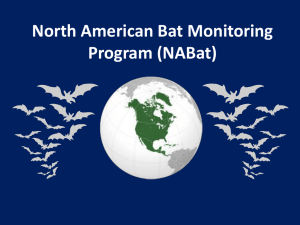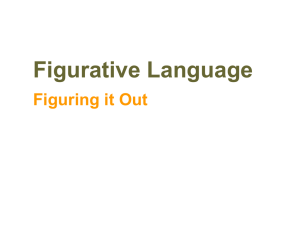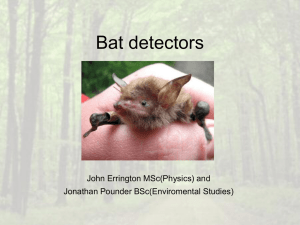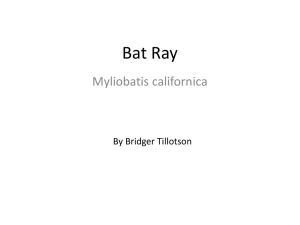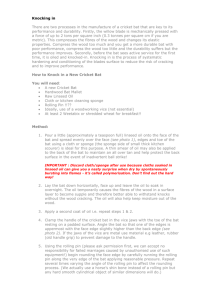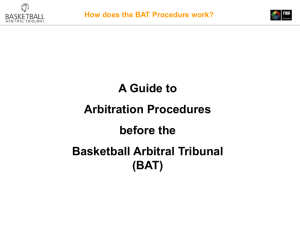The mind is like a bat
advertisement
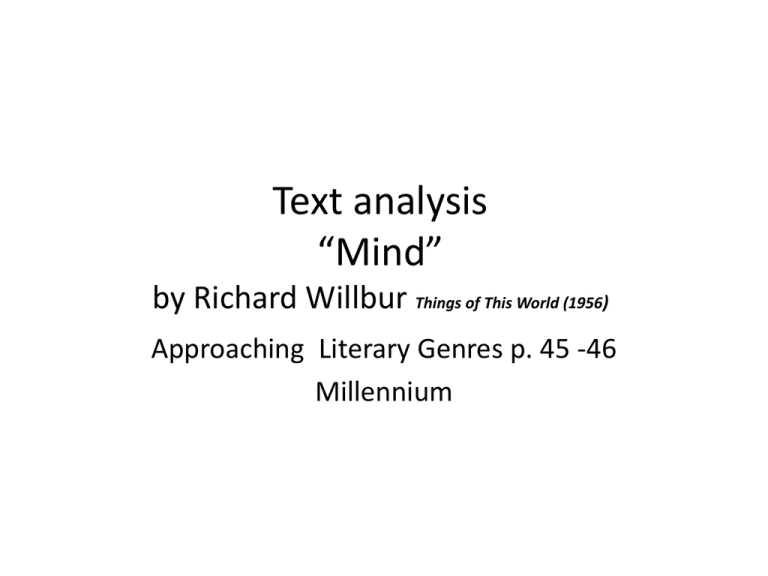
Text analysis “Mind” by Richard Willbur Things of This World (1956) Approaching Literary Genres p. 45 -46 Millennium Mind in its purest play is like some bat That beats about in caverns all alone, Contriving by a kind of senseless wit Not to conclude against a wall of stone. It has no need to falter or explore; Darkly it knows what obstacles are there, And so may weave and flitter, dip and soar In perfect courses through the blackest air. MIND FOCUS ON THE 1. • MEANING What is the mind at work compared to in the first stanza? It is compared to a bat moving around in a cave and trying to avoid obstacles (“not to conclude against a wall of stone”. L.4) And has this simile a like perfection? 2. Explain (quoting from the text) how the poet The mind is like a bat. sees the mind at work. Precisely. Save • He sees the mind as a bat moving around in That in the very happiest intellection the cavern. But, unlike the bat, the mind can A graceful error may correct the cave. modify the cave (“A graceful error may correct 3. The second stanza follows the image of the cave”,. L.12) i.e. reality by coming to the the mind cleverly avoiding obstacles and wrong conclusions. moving in many directions. The expression • free range: “And so may weave and flitter, dip that refers to free range is highlighted in and soar” (l.7). yellow. Underline the expressions that refer to • Cleverness: Darkly it knows (l.6); “In perfect cleverness. courses through the blackest air” (l.8); 4. The poet seems to have doubts about the mind being able to roam as freely as the bat. • And has this simile a like perfection? (l.9); Highlight in green the words and expressions “Save That” (l.10-11); “may correct” (l.12) that indicate his doubts. FOCUS ON THE SIMILE 5. The poem is built around one central image, that of the bat’s flight resembling the mind’s play. Underline one more simile. • “Mind in its purest play is like some bat… Not to conclude against a wall of stone” (ll.1-4). • “The mind is like a bat” (l.10). 6. In the extended simile of the first stanza, the words highlighted are normally applied to the mind. Highlight in blue those applied to the bat. (Bear in mind in this context they apply to both.) Mind in its purest play is like some bat That beats about in caverns all alone, Contriving by a kind of senseless wit Not to conclude against a wall of stone. • • mind : “ in its purest play” (l.1); “Contriving by a kind of senseless wit” (l.3); Bat: “beats about in caverns”(l.2); “wall of stone”(l.4); 7. Once the comparison has been made, in the second stanza the poet does not use another simile. Instead there is a complex image that is both literal (if applied to the bat) and figurative (if applied to the mind). Highlight in pink the words in the second stanza that are normally applied to a bat’s flight. • The words usually applied to the bat’s flight are: “explore” (l.5); “obstacles” (l.6); “weave and flitter, dip and soar”(l. 7); “the blackest air” (l.8). It has no need to falter or explore; Darkly it knows what obstacles are there, And so may weave and flitter, dip and soar In perfect courses through the blackest air. 1. falter= to lose strength and stop; 2. weave = moving quickly and changing direction often, especially to avoid hitting things; 8. In the final stanza the poet reflects on the relation between the simile he has used and reality. Highlight in violet the exact words. The mind is like a bat. Precisely. Save That in the very happiest intellection A graceful error may correct the cave. (ll. 10-12). 9. Does he create another simile here? • Yes, he does. But he creates a simile by slightly changing the first one. 10. How does the second simile differ from the first? Geave reasons for your choice/s: more optimistic greater understanding of a bat’s life presence of some unpredictable mistake more disillusioned • The simile is more disillusioned because it stresses the fact that the mind’s knowledge can never be as perfect as the bat’s flight is. The mind’s knowledge is limited and is not so adjusted to reality as the bat is adjusted to the cave. It could also be said that this simile stresses the presence of some unpredictable mistake (“A graceful error”. l.12) which leads the mind to wrong conclusions , that is to “correct the cave” (l. 12). •



